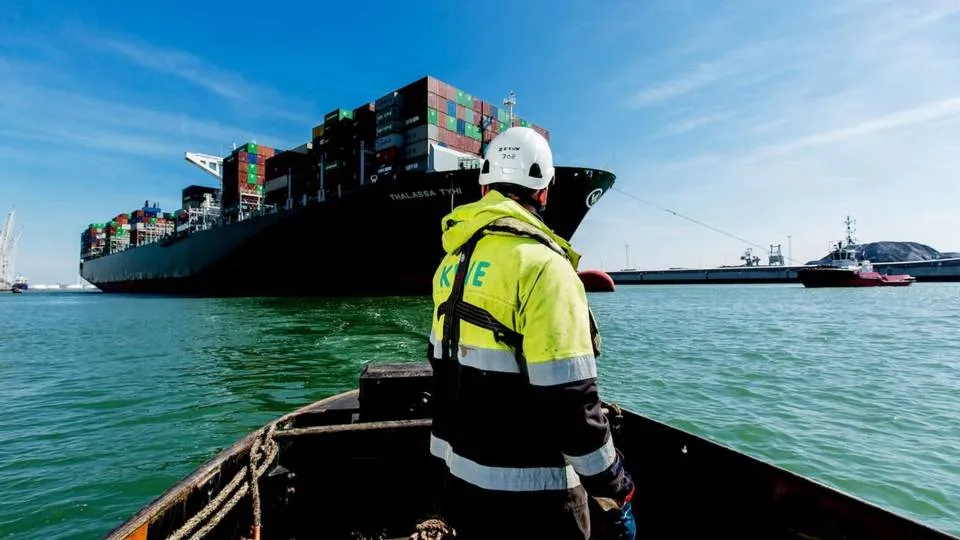During the visit to the terminal by Gilberto Pichetto Fratin, Minister for the Environment and Energy Security, and Michele de Pascale, President of the Emilia-Romagna Region, CEO Stefano Venier confirmed the timeline for the start of commercial operations. Substantial positive impacts for the socio-economic fabric were also reaffirmed.
The regasification unit BW Singapore, which has been moored 8.5 kilometres off the coast of Punta Marina since 28 February, is ready to enter operation. With the arrival of the first cargo of U.S. LNG, delivered by the tanker Flex Artemis on 3 April, the commissioning activities of the facility preliminary to the start of the first phase of commercial operations, scheduled for early May, began.
This was confirmed by Snam CEO Stefano Venier during a visit to the offshore terminal by Environment and Energy Security Minister Gilberto Pichetto Fratin and Emilia-Romagna Region President Michele de Pascale.
“With the entry into operation of the Ravenna terminal, we are adding another fundamentally important element to the process of securing the country’s energy supply, which began in the aftermath of the Russian-Ukrainian crisis and has been made possible by the joint efforts of institutions and companies at both national and local level,” Venier commented. “We are not only keeping on schedule, we are also showing that this can go hand in hand with environmental protection and monitoring.”
Like the Italis Lng terminal already in operation in Piombino, the BW Singapore regasification unit, which was purchased by Snam in July 2022, has an annual regasification capacity of 5 billion cubic metres.
With its entry into operation, Italy’s total regasification capacity will rise to 28 billion cubic metres per year, a volume equal to that imported from Russia in 2021. This will account for 45% of the country’s domestic gas demand, which will thus be met through a carrier that guarantees wide diversification of supply routes, allowing the country’s system to absorb the effects of persisting global geopolitical tensions.
Role of LNG
Liquefied natural gas (LNG) continues to make a fundamental contribution to the diversification of the Italian energy system. In 2024, for example, LNG met a quarter of Italy’s gas demand, with 150 ships from around 10 different countries reaching the four regasification terminals in Italy which, with the entry into operation of the Ravenna terminal, will soon become five. A trend that continues: in fact, 45 gas tankers from six different countries have already docked in Italy in the first quarter of 2025 alone.
Benefits for the region
The total investment for the regasification terminal amounts to just over one billion euros. During the peak phase of the construction work, Snam employed up to 1,200 people. As in the construction phase, cooperation with all stakeholders in the port system and related services will remain strategic during the operational stage. Snam estimates that, each year, the operation of the regasification terminal will result in approximately 20-30 million euros for technical-nautical services, platform management and environmental monitoring, similarly for what already occurs for the Italis Lng terminal in Piombino.
The Ravenna FSRU project has been designed to prioritise natural areas, respecting protected areas and minimising land use, and adopting methods compatible with the geological, geomorphological, hydrogeological and seismic characteristics of the region and with the relative planning regulations in force.
In fact, throughout the construction of the project Snam has adopted the most rigorous sustainability and environmental protection criteria for all land and sea works. The project has aimed to use existing assets, both above and below land and sea, as much as possible, electrifying every consumption that could be electrified and using the trenchless technique for laying the pipelines without excavation, thus reducing the impact on the coastline. In addition, intense environmental monitoring was conducted, taking into consideration 70,000 parameters for the onshore area and 20,000 for the offshore area, and supported by the involvement of more than 20 external companies, three universities and ten analysis laboratories.






